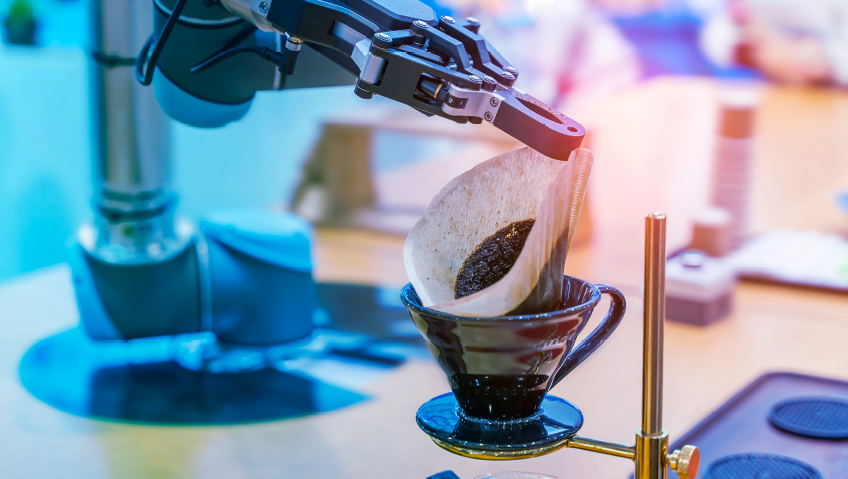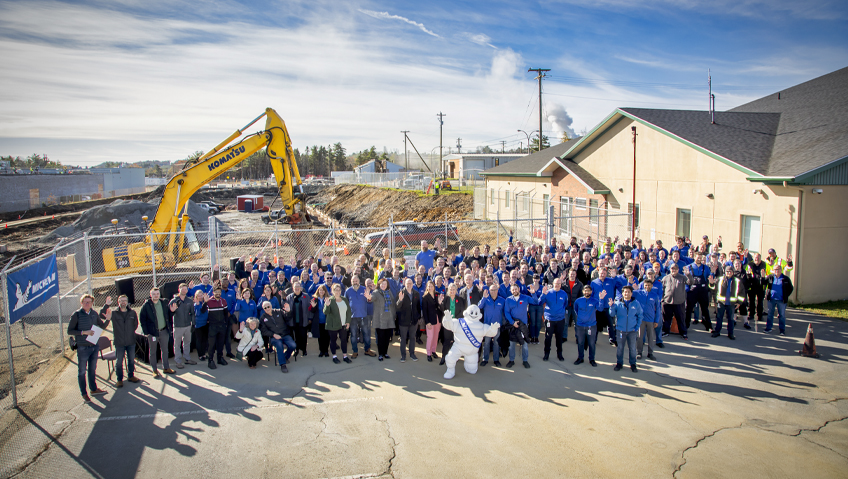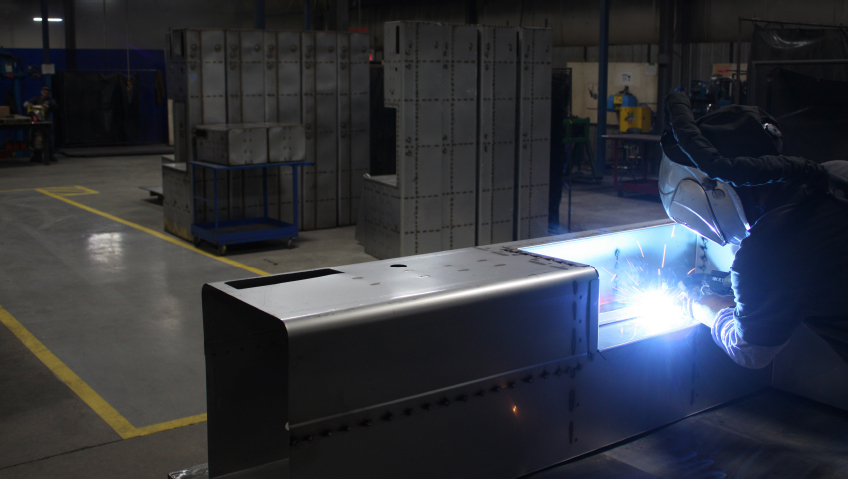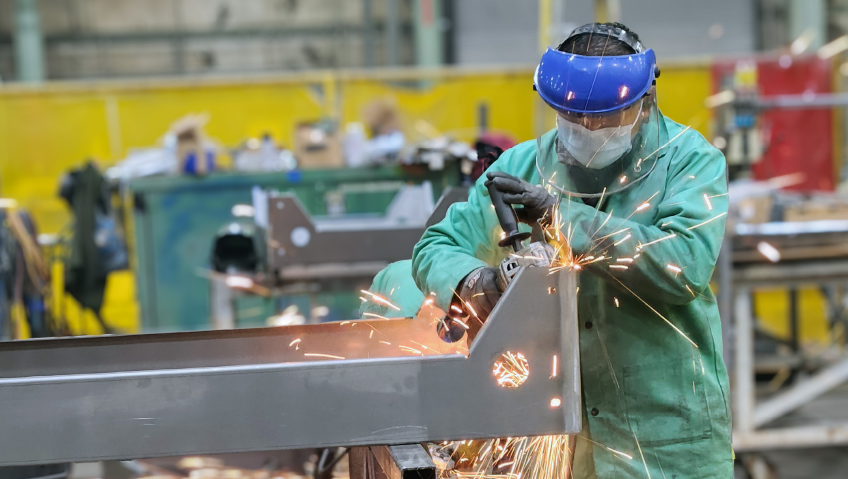As the global use of automation, robotics, and language processing artificial intelligence (AI) like ChatGPT increases, many are questioning where the world is heading and not if, but when, technology will make their jobs obsolete.
Are we speeding toward a bleak Westworld or Blade Runner-esque future where sentient machines take over, or a blissful utopia where, thanks to AI, humans have boundless free time to enjoy life, unburdened of the constraints of work? As both development and take-up of automation increases, it has become impossible to read the news without seeing articles and studies from both sides of the digital fence.
A few years back, global management consulting and strategy firm McKinsey & Co. issued a report forecasting that automation would cause approximately 40 percent of existing Canadian jobs to disappear over the decade. Other doom-and-gloom scenarios in the United States portrayed millions of jobs being lost in California because of automation.
And in Las Vegas, casino workers prepared for a strike, citing automation and a restaurant called The Tipsy Robot. Perhaps they had good cause for their apprehension: unlike even the most skilled mixologists, these robots could create perfect cocktails like the ‘Darth Vador’[sic] (ice, raspberry, vodka, and Amaretto) or the ‘Moscow Mule’ (ice, vodka, sour, and ginger beer) in just 60 to 90 seconds—up to 120 beverages per hour.
But that was in 2018. Despite predictions that thousands of bartenders and cocktail servers would be negatively affected, countless bars and casinos on and off the strip are still in business, as are the tireless Tipsy Robots, which continue putting on a show while “infusing entertainment into every beverage they create.”
Real or exaggerated?
According to statistics from Leftronic—a “real-time data visualization and status monitoring platform for business”—automation has been responsible for the loss of 1.7 million jobs since 2000, with forecasts that AI will displace 40 percent of jobs worldwide in the next 15 years.
In short, automation, advanced electronics, robotics, software, and computer-controlled devices are replacing human workers. More and more machines enter the workforce as repetitive tasks performed by humans, such as assembly line work, are being taken over by robotic technology.
What statistics often cannot take into account, however, are the new opportunities automation provides for human workers. Machines handling simple yet time-consuming work means workers can diversify their skills, take on greater responsibility, and earn more money in the process.
Ask companies involved in everything from manufacturing to the service industry why they are making costly investments in digitization, AI, and robotics, and many will cite the same reasons. These include everything from improved productivity and efficiency to fewer errors, greater compliance—and freeing up human workers so they can focus on more challenging activities. These considerations are especially true in manufacturing, which continues to face a shortage of skilled employees.
According to a study released last fall by the Manufacturing Institute (MI) and Deloitte, the loss of 1.4 million manufacturing jobs during the COVID-19 pandemic came when the sector already faced a real shortage of skilled labor.
Findings in Creating Pathways for Tomorrow’s Workforce Today: Beyond Reskilling in Manufacturing show that America’s manufacturers need to fill four million jobs, with about 2.1 million remaining unfilled if more women and men aren’t encouraged to enter modern manufacturing careers.
“The cost of not filling those opportunities can be significant, preventing manufacturers from taking on new work and expanding their offerings,” the study states. “Deloitte estimates the cost of those missing jobs could potentially total $1 trillion in 2030 alone. In addition to a discussion of the future of work, this report also delves into the importance of diversity, equity, and inclusion. A more inclusive workforce, one that represents the full diversity of our country, is key to addressing the sector’s workforce needs and for long-term success.”
Backlash or blessing?
For consumers, automation in the form of self-checkouts can be a blessing or a curse. For some, self-checkout is fast and efficient. No chit-chat is involved, just scanning and bagging your items, paying and going.
Before the pandemic, some Canadian Tire stores installed these machines, only to remove them a few years later. In the United States, certain Walmart locations have pulled the machines. And in England, Booths Supermarket recently ditched self-checkouts in 26 of its 28 stores, bringing back tills staffed by people.
Reasons for re-introducing real people range from customer service and being able to answer questions to some customers experiencing frustration with products that refuse to be scanned. Other customers simply resent doing unpaid ‘work,’ believing staff should perform checkout duties, and also find the process impersonal.
There are also customers who forget (or “forget”) to scan an item, or deliberately scan barcodes for cheaper products (scanning a 99-cent cucumber but walking away with an $18 filet mignon). And at membership-based Costco, self-checkout machines were pulled after it was discovered non-members were using other people’s cards.
When they first appeared, many large retailers had seen self-checkouts as the future, requiring fewer staff on the payroll and boosting efficiency. Although they were introduced in the mid-1980s to reduce labor costs, it wasn’t until the last few decades that they became popular.
Predictably, this popularity got a boost during the pandemic with attempts to reduce contact between people. Fast-forward to today, and the backlash against self-checkouts keeps growing. While it’s unlikely that retailers will completely eliminate self-checkouts, it’s clear that this technology needs to improve. Despite talk of automation being a ‘job killer,’ AI and robotics certainly cannot replace all types of work.
Costs to consider
A recent study from MIT addressed AI robots replacing humans across many industries. In one of the first-ever examinations of AI displacing human workers, the study noted that the cost is simply too high at present. Just 23 percent of workers (in terms of dollar wages), “could be effectively supplanted.”
The 45-page working paper Beyond AI Exposure: Which Tasks are Cost-Effective to Automate with Computer Vision? discusses the “level of technical performance needed to do a task, the characteristics of an AI system capable of that performance, and the economic choice of whether to build and deploy such a system.”
It goes on to clarify that, “The result is a first estimate of which tasks are technically feasible and economically attractive to automate—and which are not.”
An example given is that of a small bakery. Yes, an AI system with cameras and sensors can verify the quality and quantity of raw ingredients, but is it cost-effective and worth the investment for the bakery? From this perspective, it is much cheaper simply to have human workers.
Other forms of artificial intelligence are also being questioned, including ChatGPT and Google’s Gemini. In just the past few months, ChatGPT has lost much of its luster, owing to wildly inaccurate and biased responses. Although Google glowingly described Gemini last December as having “next-generation capabilities” and showing “responsibility and safety,” just weeks ago, the company hit the pause button on Gemini’s AI image generation following complaints about diversity. Described by critics as being “woke,” the AI tool created images of a female pope and “racially diverse Nazis,” for example. This saw the company subjected to ridicule by the likes of Elon Musk (who called the errors “racist and anti-civilization”), and Google conceding that Gemini was “offering inaccuracies in some historical image generation depictions,” and that the program was “missing the mark.”
Nevertheless, even with some significant issues, automation is here to stay. The speed at which businesses will adopt it is another matter.






